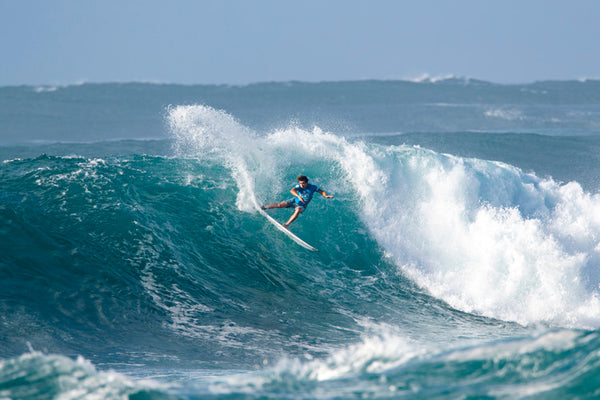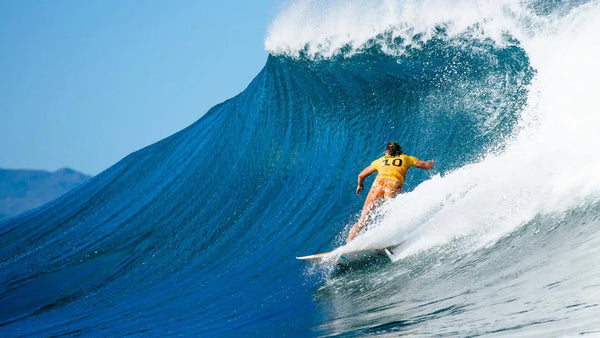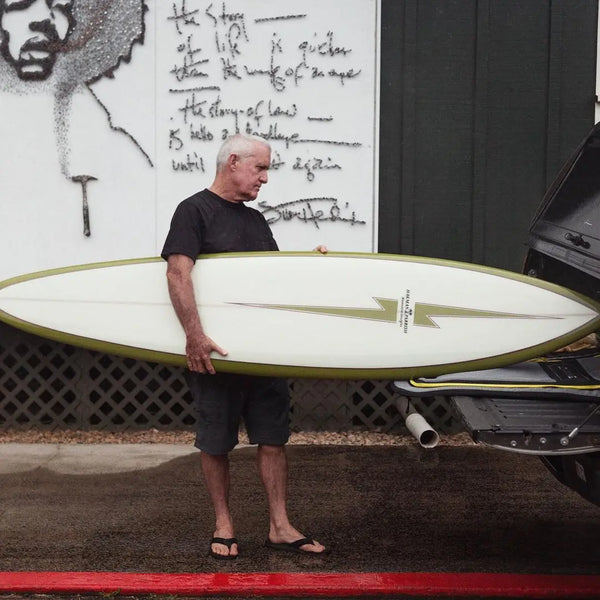Waves of the North Shore Series 2 – Sunset Beach
Share
Blog series for the best surf spots on North Shore: Sunset Beach
This winter, Hawaiian South Shore will be presenting a series of blogs about the best surf spots on the North Shore, sharing a bit of their history, how they break, and what makes them tick. From small longboard waves to the original big wave spot—not to mention the deadliest barrel on the planet—the Seven-Mile Miracle has it all. Whether you are new to the Country or have surfed these waves your entire life, join us as we dive into the best spots on the North Shore.

Courtesy: surfertoday.com
Considered to be the North Shore’s great equalizer, Sunset Beach is a huge aquatic playing field with a dozen different faces. It’s a deep-water wave that also has a slabby inside bowl, but that’s also a rippable point or an equally rippable reef break, depending on the day! People ride anything from 5'9" shortboards to 11'00" guns out there—sometimes on the same day—and somehow it all seems to work out.
When the swell is small and north, Sunset Point is one of the most consistent waves on the North Shore. Up to around head-high, you’ll see people out there on shortboards, longboards, fish, softtops, and even foil boards—just about anything that’s fun to ride on a user-friendly wave. A relatively soft right-hander that occasionally barrels, the Point can run for anywhere from 5-10 seconds, and tends to handle the ENE trades better than a lot of other spots that break at the same size.
Once Sunset Point gets up to the chest-high+ range—and particularly if there’s some west in the swell—Val’s Reef starts to break, too. Located across the channel from Sunset Point (to the west), Val’s is essentially the inside reef break right located just offshore, and is a favorite with the young shortboard crew. Technically it’s an A-frame that’s surfable both directions, but the left shoulders off into deep water pretty quickly, whereas the right stretches out and provides a couple sections for turns or head-dips.
When the swell moves up into the three-foot+ range, the Inside Bowl starts to break—although no one really bothers with it until it’s at least four- to five-foot, since it tends to be a floppy burger when it’s smaller than that. At double overhead, Inside Bowl is one of the most deceptively attractive rights on the North Shore—slabby and hollow, with the potential to make a crazy barrel, but flopping and pinching more often than not. This is where the majority of the surfing at Sunset Beach goes down, and has been the site of some of professional surfing’s greatest showdowns.
Interestingly, Sunset is one of the few events that Kelly Slater has never won, a testament to how fickle and difficult it can be to get dialed. As Slater has demonstrated, even the best surfers in the world tend to struggle at Sunset, which can be incredibly difficult to surf well. It has the power of a slab, but the feel of a deep-water, open-ocean wave, making it incredibly challenging to read and navigate. Board choice is also tricky, as Sunset feels like a big wave spot, even when it’s not XL—but you still need to be able to turn your board if you want to impress the judges. Most people tend to size up four to six inches from their shortboards, although there are kids who charge the place on 5'10s, and Sunny Garcia used to dominate the place on boards as long as 7'6".
When the swell moves into the eight-foot+ range, outside Sunset starts to break—and it can handle as big as 12- to 15-foot, although it tends to get pretty unruly above 10 foot unless the swell has a lot of west in it. Once the outside starts breaking, the playing field becomes enormous, with waves breaking anywhere from the far north lineup next to Boneyards (essentially outside of Sunset Point) all the way down to the channel between Sunset and Kammies (the far west corner of Inside Bowl). And of course Inside Bowl continues to break as well, at least on all of the smaller sets, which tend to get swooped up by the shortboard crowd who sit on the inside and dodge the bombs out the back.
Most of the crew that sits outside on large to XL days are on boards ranging between 7'0" to 10'0", and volume is definitely helpful for getting into waves, due to the open-ocean feel. Swells will stand up way out to sea, then shift, disappear, or turn into a wedging teepee somewhere completely unexpected. Sunset is considered to be the ultimate training ground for big wave surfing, and for good reason—it packs a punch, cleans up the lineup on a regular basis, holds you down and beats you up, and provides an opportunity to get your big boards dialed in. Most of the local big wave crew is out there any time the swell is solid but not quite big enough for Waimea or the outer reefs, and everyone gets humbled at some point. It’s not uncommon to paddle out at Sunset on a big day and only catch one wave in a few hours, although it’s typically not the crowd that limits you.

Photo: WSL
The hard work, savage beatings, and patience pay off every now and then, however, as there’s not much better than rolling into a huge offshore teepee, screaming down the line into the Inside Bowl, and packing a slabby tube in front of the paparazzi lining the beach.
Sunset may not have the luster and reputation that nearby Pipeline enjoys, but it’s a legitimate heavy water spot that is available to everyone—and most of the great North Shore surfers have proven themselves there. Local heroes like Pancho Sullivan, Mike Ho, Johnny-Boy Gomes, Sunny Garcia, Andy Irons, and Love Hodel all built their reputations partially on their performances at Sunset. Meanwhile, the approaches of guys like Tom Carrol, Reno Abellira, Roger Erickson, and “Mr. Sunset” Jeff Hakman were the stuff of legends in the 1960s to 1980s, back when Sunset Beach was the center of the surfing universe.

@jeff_hakman
Six decades later, Sunset is still as relevant as ever. It’s one of the most challenging waves on the North Shore, but also one of the most accessible—at least for those who have the guts to paddle out. And whether you are out in the lineup or watching from shore, it’s always a spectacle.
More to read📚🔎
WAVES OF THE NORTH SHORE SERIES 1 – VELZYLAND
